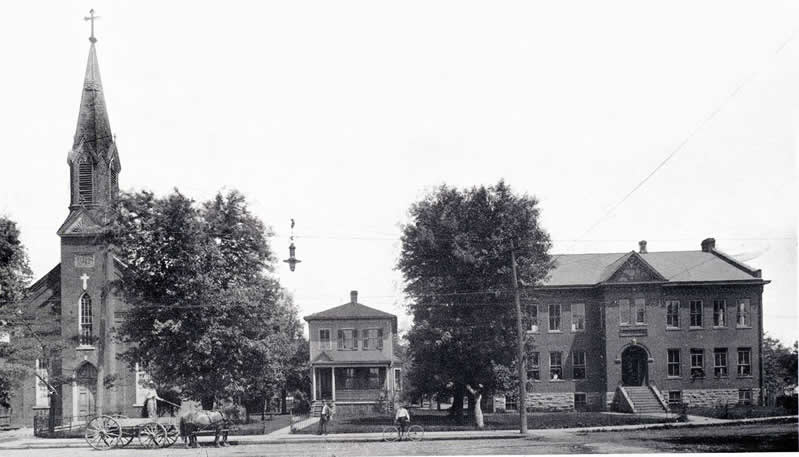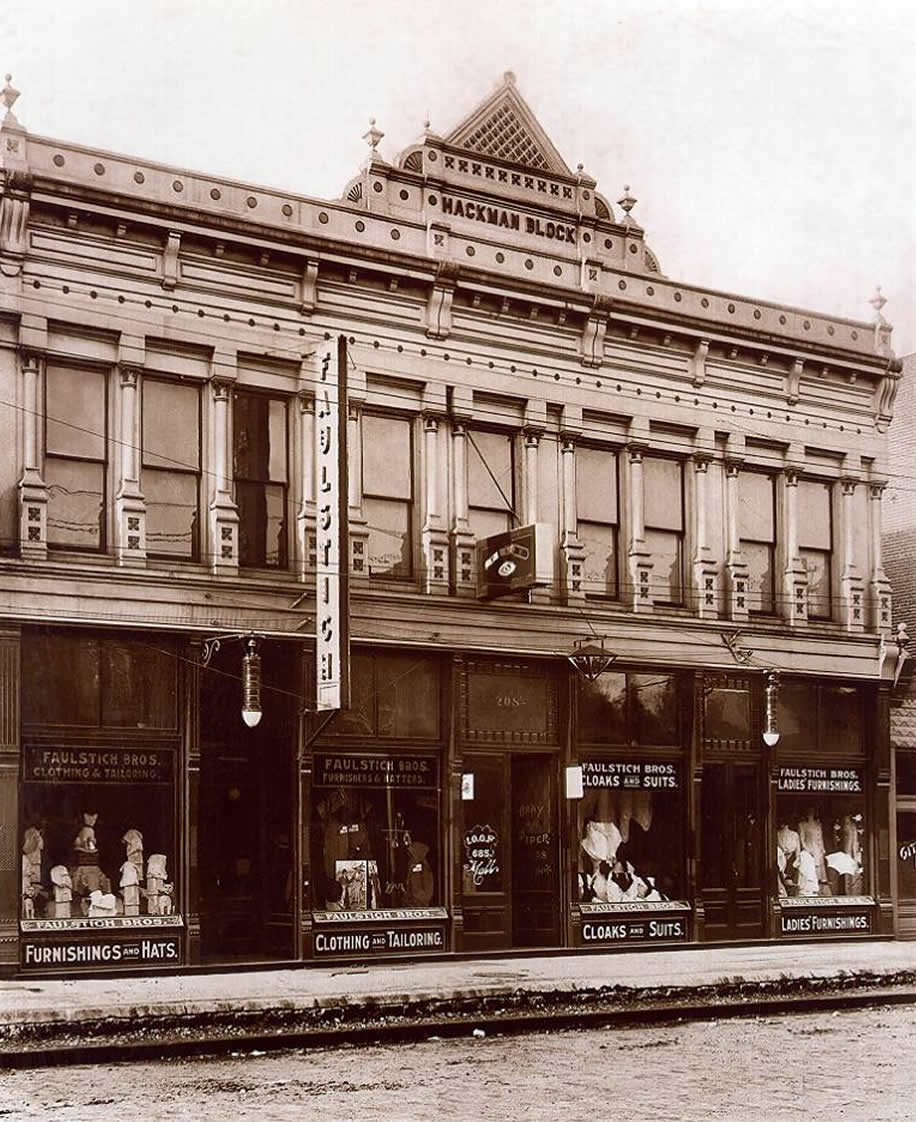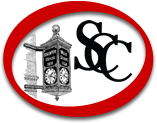
The Staunton Chamber
of Commerce
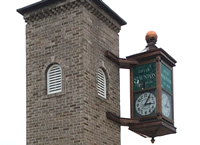
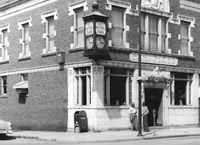
The Staunton Chamber of Commerce is a membership of dynamic, innovative business leaders and concerned citizens advancing the commercial, industrial and civic interests of Staunton.
The Chamber offers opportunities for all of its members including our youth to grow individually and corporately through educational and marketing efforts. An elected 9-member Board of Directors serves as the governing body for the organization; however, each and every member is an essential and valued part.
Chamber Committees proudly consists of Route 66 Blue Carpet Corridor Committee, Snack with Santa, Car Show, Circus, Miss Staunton Pageant Committee, Membership, Scholarship, and more! The Chamber is excited to add new members and looks forward to encouraging its residents and visitors to "Explore Staunton!"
History of Staunton, Illinois
An early pioneer of the area named Mr. Stanton in 1836 donated some land for a grant to the nascent community, many of whose members had come from North Carolina and other places in the east. (Many English names in Staunton are traceable to this time.) The request for town status went to Washington, D.C. where by mistake a 'u' was added to Stanton. Bowing to bureaucracy, the new city founders must have decided that Staunton was good enough for the town name.
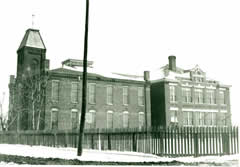
The first school stood on a piece of high ground the Old Cemetery now occupies west of town, southwest of the present elementary school. The second school was built shortly afterwards in 1828 and in the same spot as the population grew. It was taught and operated by William Wilcox as a private school. In 1855, a school was built between Pearl and Mill Street, now an empty lot. Mr. Wall, another prominent citizen, donated land for a school on Henry St. where R P Lumber now stands. It operated with a later added building until the beginning of the 1960s.
Later, with expansion of mining, the population grew further. In 1925, the population was at a high of 6,600. To serve students, a school was built on Pennsylvania St. It was called North School to differentiate it from South School on Henry St. It was closed in 1942 as the population with the demise of mining. It was changed in the 1950s into Community Memorial Hospital.
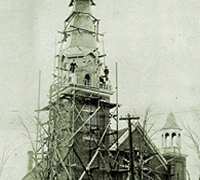
present church
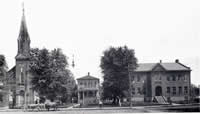
Zion Lutheran and St. Michael’s church and school were built in the same time frame and are still operating. At one time the Evangelical and Reformed Church, which is now known as the United Church of Christ, operated a German language school to serve the many German immigrants. It closed during WWI as feeling ran high against Germany and anything German.
Staunton once boasted a 4 story building housing a flour mill called the Royal Gem Mill which was on the Southeast end of Main St. It produced 250 barrels of flour a day. In the late 1800s its Jack Frost Flour won a medal at the Paris, France World’s Fair. A later company was Tuefert’s bottling company which bottled soda. Still later in the 1950s there was a sewing factory employing mostly women.
Mining, farming, and business were the principal occupations of Staunton residents. There were mine company houses at one time down Bunker Hill Rd., next to the soccer fields. The mound at the fields is what is left after mine reclamation in the 1980s of the slag pile from #14 mine. At one time there were coal mines all over Staunton, Livingston, Mt. Olive, Gillespie, and Benld. There were also private mines. Men would dig shallow mines on the their properties where coal lay close to the surface. There was a ready market since each household burned coal and wood for their energy needs. All the big mines had their own number and distinctive sounding steam whistles which announced the beginning of shifts and sometimes, frighteningly, accidents. There have been deaths and injuries in Staunton mines from ceiling falls, gas and fire. On New Year's Eve, all the mines blew their whistles at midnight. It was a wonderful sound, as one by one, depending on how far from each mine you lived, the different whistles sounded and the elders would exclaim, “that’s #2!, or #7!, or #14!” Then the men would shoot off their guns into the air, women and children dragged out of their warm beds for the occasion, would bang on dish pans or beat spoons together to make as much noise as possible to drive out the old year and welcome the new. (At least this is what happened on the outskirts of the city.)
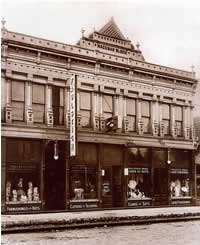
Some of the old buildings still stand on Staunton’s Main Street. In 1870, the brick building which now houses Cisler Real Estate was built as a tavern and residence. It has also been in some of its incarnations a grocery store, a restaurant, and a fabric store. It boasts in the back a deep hole which used to be an ice hole for storing ice over the hot summer, gathered from a pond in winter. In 1890, the building which recently housed Jubelts bakery was built. The Hackman and Quade buildings occupy the same block. Danny Russell’s Furniture Store occupies the Hackman Building. He is the great grandson of William Hackman who was at fine furniture and first operated the store. It may be he or a brother who is responsible for the carving of monuments in the old cemetery.
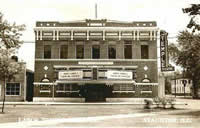
Russell Furniture now owns the Labor Temple, built in 1914 in the days of proud and powerful unions by members who paid their share with portions of each paycheck. Downstairs was the movie theater, upstairs were offices, labor office and fraternal organization meeting rooms. The movie theater operated until the very early 1970s. It saw the movie industry change from silent movies with a live organist to Technicolor. In its early days it was also the scene of live performances of traveling actors. As a matter of fact, Staunton once had a vaudevillian theater on Main St.
Old Mr. Sherman, a Jewish immigrant who started out as a peddler with a huge pack on his back, walking the highways and byways of the area, opened the department store which was later known as Jody’s. He and his sons operated it for many years and expanded it into other communities. It was the anchor store in town.
During the time of the largest population there were many Jewish families in Staunton, often hiring young girls to work as house maids in their homes and boys and girls to work in their businesses, providing the children of the big families of the time a way to earn enough to stay in the community. There was never a synagogue and devout families went to St. Louis to practice their religion.
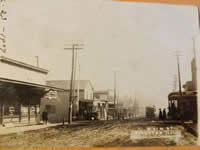
The Illinois Traction System was built in 1905. Its tracks ran down Union Street. It was an electric streetcar which ran between St. Louis and Springfield and Northward. In 1910, a terrible accident occurred when two trains traveling in opposite directions collided in the bottomlands North of Staunton. One streetcar was bound home from the State Fair in springfield, the other from the Veiled Prophet’s parade in St. Louis. One of the engineers ignored the signal and tried to beat the other to the next siding, resulting in death and injury to people in both trains.
The Staunton Star-Times has been in continuous operation, with slightly different names due to mergers, since the late 1800s. It is now owned by Walter Haase. In recent years Bill Napper has come to town and printed the Kwik Konnection.
Staunton has had its economic ups and downs in the almost 150 formal and almost 200 informal years of its existence. We seem at the moment to be in another transition phase. Just in recent years, a lot of stores have closed. It seems that we must in each generation remake ourselves.
We invite you, our newest citizens, to help us in our endeavor to keep Staunton a good place to live, to raise and educate our children, to make and keep friendships, and to add another layer of richness to our history. If you would like to see more about the history of Staunton or Route 66, visit: BlueCarpetCorridor.com.
If you would like your business to join the Staunton Chamber and help keep our city and community growing strong, learn more here.
Staunton's South School
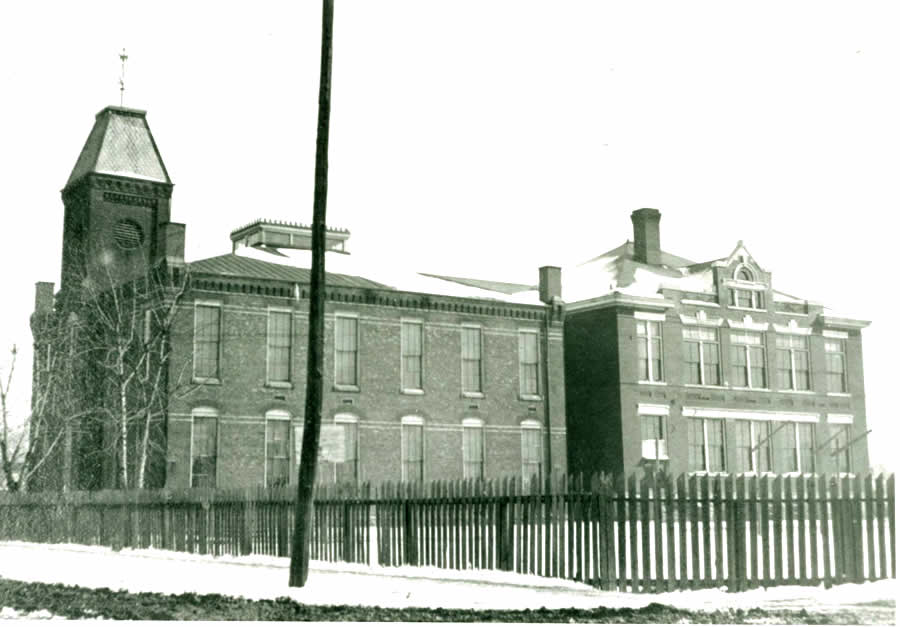
Land was donated for a school on Henry St. where R P Lumber now stands. It operated until the beginning of the 1960s.
Zion Lutheran Church
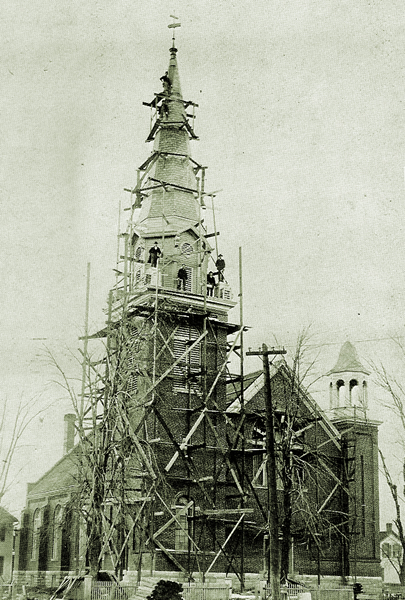
This is a photo from the construction of Zion's now present church. Builders take time out in 1905 for a picture.
The Labor Temple Theatre
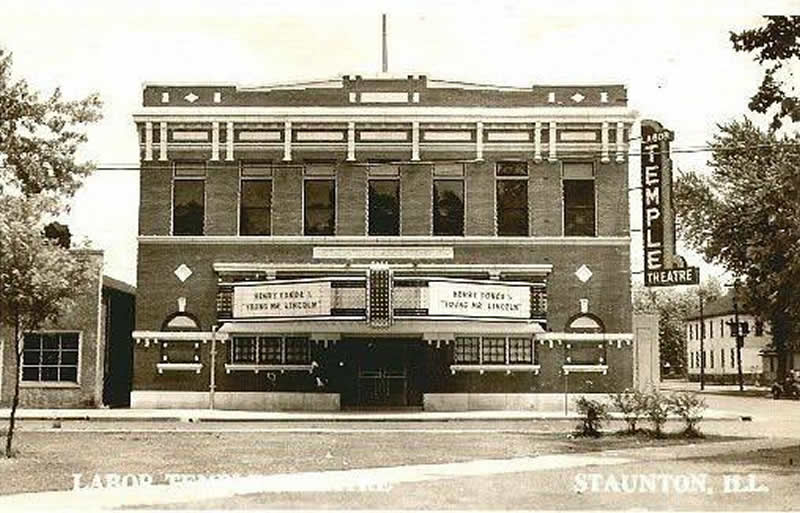
Built in 1914, the Labor Temple was a movie theater downstairs and offices upstairs. Starting with silent movies and a live organist, then evolving to Technicolor, it operated until the early '70s.
Staunton's Street Car
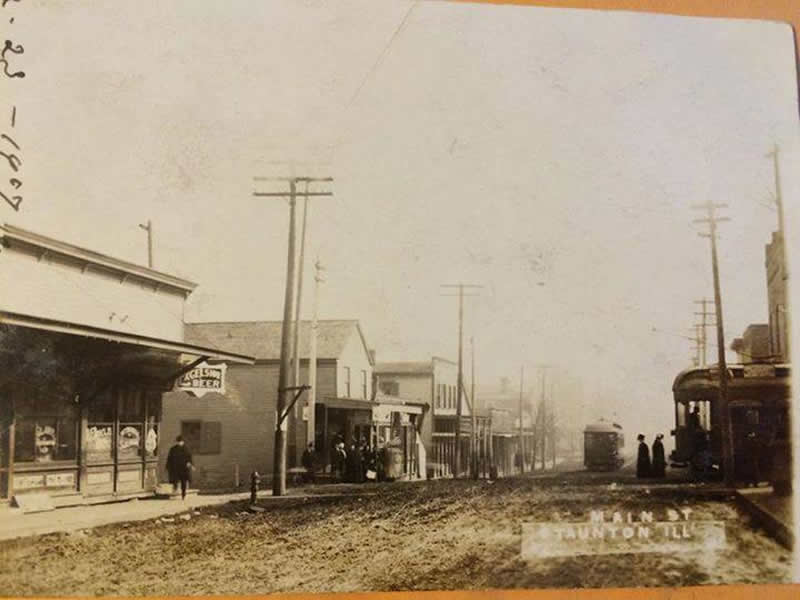
A picture of Staunton's street car at Main Street and Union. Picture dated 1907.
Staunton City Clock

Pictured is the iconic clock of Staunton, IL in front of the City Library at the corner of Main and Edwardsville Street.

 HOME
HOME OUR BUSINESSES
OUR BUSINESSES NEWS & EVENTS
NEWS & EVENTS CALENDAR
CALENDAR GRAB A BITE
GRAB A BITE ENTERTAINMENT
ENTERTAINMENT BECOME A MEMBER
BECOME A MEMBER CONTACT US
CONTACT US ABOUT SCC
ABOUT SCC MENU
MENU